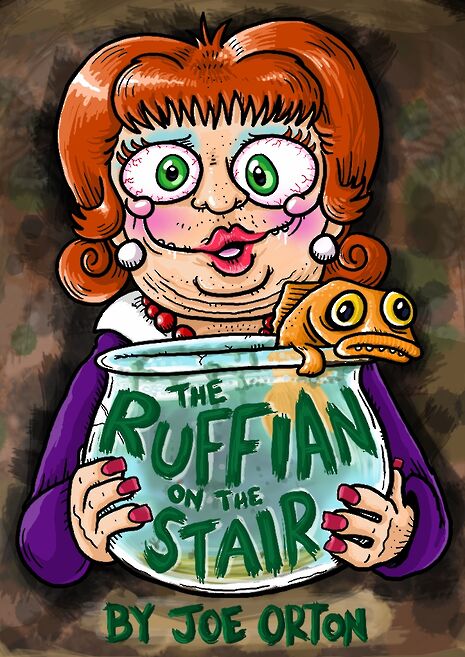Theatre: The Ruffian on the Stair
Ariadne Lyroudia enjoys this well-considered production of the Joe Orton classic

There is nothing like a Joe Orton classic about homosexuality, incest and murder to fill your evening with shock and awe. Walking into the Playroom, I was put off by the background Big Band music, which gave the room an entirely ill-matched American 1920s feel. I felt prepared for a disappointment; expecting a story involving a creepy ruffian, a crazy Irish husband and a gun-scene to be filled with hyperboles and generally to be badly interpreted, having seen unsuccessful, overblown executions of this play in the past.
But perhaps it was my pessimism that led to such a pleasant surprise when I found that within the first ten minutes of the play, I was hooked. David Rattigan did a commendable job of bringing the thrilling story to the stage with skill and sophistication. My attention was captured by the intriguing Wilson (George Longworth) with his beautiful yet terrifying smile, by Mike’s (Tom Stuchfield) secretive nonchalance, and at times pitied Joyce’s (Kim Jarvis) utter helplessness. Stuchfield had adopted an excellent air of obscurity and ignorance, akin to some mafia-member I wouldn’t want to cross, coupled with a heavy Irish accent. This was almost too heavy at times, for it was a struggle to understand certain phrases near the beginning, but perhaps this could be attributed to first-night nerves.
The actors moved with ease around the stage, often skilfully directed into positions that created truly filmic, transfixing moments, such as when Longworth leaned against the inner corner of the L-shaped Playroom, barely visible from either side and therefore memorably unnerving. Longworth interpreted the role of Wilson seamlessly, conveying demonstrable strangeness through his unsettling stares and grins, but equally managing to convince the audience of the character’s youthful despair, particularly during his moving final dialogue with Joyce.
Was it a revolutionary execution that will change how people view Joe Orton as a playwright? Not especially, but I do not believe that an insightful interpretation (which this was) should be condemned for not being ground-breaking. Some attempts to be innovative and to depart from tradition were at best ineffective, and at worst off-putting. A slightly disappointing moment was when the soundtrack from The Good, The Bad and The Ugly began to accompany the climactic moment of the play, which would otherwise have been impeccably gripping, were it not for the awkward circling of the stage as the actors awaited the crescendo (which took far too long). Similarly, was it intentional that Stuchfield was wearing children’s socks and Mickey Mouse underwear? Difficult to tell…
 Comment / Anti-trans societies won’t make women safer14 November 2025
Comment / Anti-trans societies won’t make women safer14 November 2025 News / Controversial women’s society receives over £13,000 in donations14 November 2025
News / Controversial women’s society receives over £13,000 in donations14 November 2025 News / John’s rakes in £110k in movie moolah14 November 2025
News / John’s rakes in £110k in movie moolah14 November 2025 Fashion / You smell really boring 13 November 2025
Fashion / You smell really boring 13 November 2025 Music / Three underated evensongs you need to visit14 November 2025
Music / Three underated evensongs you need to visit14 November 2025









